|
|
This newsletter is a summary of recent ESO Science Announcement items. Follow the links or visit ESO Science Announcements to read more.
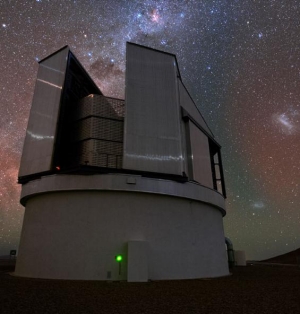
|
06 Apr 2016: The Call for Proposals for ESO Period 98 (1 October 2016 тАУ 31 March 2017) closed on 31 March 2016. A total of 901 proposals were received, a significant drop with respect to Period 97 and returning to the levels of Periods 91тАУ94. Included were also 26 proposals for Large Programmes and 7 for Public Surveys.
|
|
| Read more
|
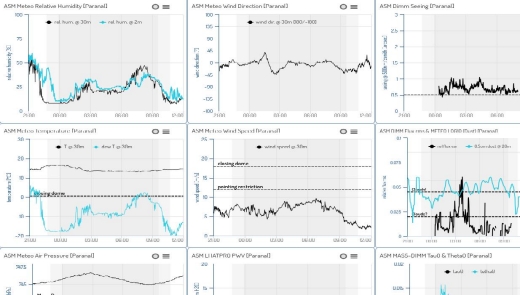
|
06 Apr 2016: The ESO astronomical site monitor (ASM) system on Paranal has undergone a major overhaul. This upgrade was required due to hardware and software obsolescence and the demands of the Adaptive Optics Facility (AOF) to measure additional atmospheric properties (altitude of atmospheric turbulence along the observing path). This upgrade also includes a new display tool of the ambient conditions.
|
|
| Read more
|
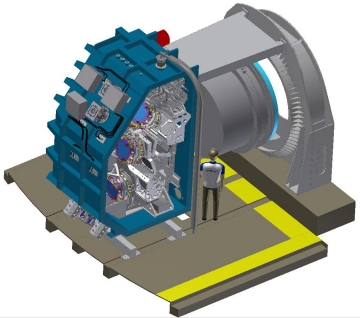
|
05 Apr 2016: The Multi-Object Optical and Near-Infrared Spectrograph (MOONS), has officially passed the major milestone of Preliminary Design Review (PDR). MOONS will be able to deploy ~1000 fibres over a field of view of ~500 square arcminutes, the largest patrol field offered at VLT Nasmyth focus. Total wavelength coverage is 0.6тАУ1.8 ѕ®m in the medium resolution (4000тАУ6000) mode; higher (R~9000) resolution will be available for the Ca II triplet (~0.85 ѕ®m) region and one region at R~20000 in H-band.
|
|
| Read more
|
31 Mar 2016: Starting on Friday, 1 April 2016, the ESO Phase 3 services, including the dedicated FTP server, the release manager, and the delegation service, will be unavailable due to a scheduled software upgrade. All services are planned to be again up and running by Monday, 11 April 2016.
The Archive Science Group apologize for any inconvenience this may cause to Phase 3 users!
|
|
| Read more
|
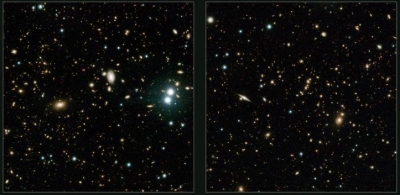
|
23 Mar 2016: UltraVISTA is an ultra-deep VISTA near-infrared Public Survey of the central region of the COSMOS field. This third UltraVISTA data release (DR3) comprises stacked images in YJHKs and NB118 narrow-band filters together with a five-band merged catalogue. The principal difference with respect to the previous DR2 release is a substantial increase in exposure time in all five bands (by a factor of 1.7тАУ4.6) in the four "ultra-deep stripes" regions, corresponding to an increase in depth of 0.4 тАУ 0.8 mag.
|
|
| Read more
|
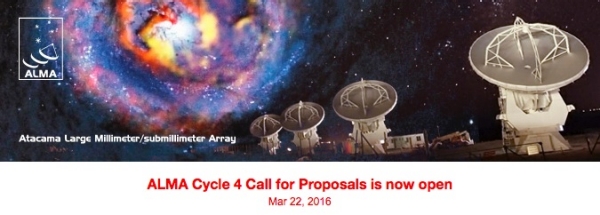
|
22 Mar 2016: The ALMA Director, on behalf of the Joint ALMA Observatory (JAO) and the partner organizations in East Asia, Europe, and North America, is pleased to announce the ALMA Cycle 4 Call for Proposals (CfP) for scientific observations to be scheduled from October 2016 to September 2017.
|
|
| Read more
|
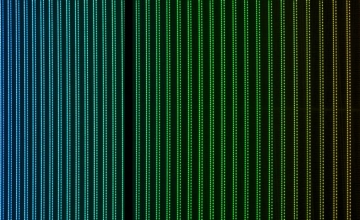
|
18 Mar 2016: The first commissioning run of the HARPS Laser Frequency Comb (LFC) was held from 8тАУ17 April 2015. The HARPS LFC is described in a Messenger article (Lo Curto et al. 2012). In addition to numerous calibration measurements, spectra of 4 asteroids and 20 stars were repeatedly observed during commissioning to monitor their radial velocity variations and to compare with published data. These spectra are available for download from the Science Archive Facility. See the HARPS LFC commissioning page for details.
|
|
| Read more
|
Upcoming ESO or ESO-Related Workshops
- ESO/OPTICON School on Use and Data Reduction of X-shooter and KMOS
ESO Headquarters, Garching, Germany, 9тАУ13 May 2016This NEON Archive School is devoted to proposal preparation and data reduction for X-shooter and KMOS. The School is preferentially targeted to PhD students, but advanced MSc's, junior Postdocs, as well as senior researchers, can also apply. Introduction to Phase 1 and 2 for both instruments and hands-on experience with data reduction tools will be provided. Details here.
- Resolving Planet Formation in the Era of ALMA and Extreme AO
Joint ESO, ALMA, NAOJ, NRAO Workshop. ESO Vitacura, Santiago, Chile, 16тАУ20 May 2016Results from ALMA Long Baseline observations and from SPHERE, GPI and other high-contrast AO instruments herald new developments in the fields of protoplanetary and debris discs, and planet formation. For the first time observations of the regions where planets form are achievable. The workshop will discuss the state-of-the-art results, offering a panchromatic view, with a balance between observations and theory. Discussions will be scheduled on how facilities, such as JWST, E-ELT and TMT, and progress in modeling, will advance the field of planetary formation. The workshop is still open for registration here.
- MUSE First Year Science and Beyond
EWASS 2016, Athens, Greece, 4тАУ8 July 2016The VLT wide field optical integral field spectrograph MUSE has opened up exciting new perspectives in many different areas of observational astrophysics, including star forming regions, stellar populations, local and distant galaxy kinematics and high-z galaxy studies. The Symposium will cover the full range of topics tackled by MUSE observations and highlight key results from the first year of observations. Particular aims are to: share experience regarding observing strategy, reduction and analysis; discuss challenges to interpret and model MUSE data; and stimulate synergies with other facilities. Full details on the EWASS webpage for Symposium S3.
- Active Galactic Nuclei: What's in a name?
ESO Workshop, ESO Headquarters, Garching, Germany, 27 June тАУ 1 July, 2016Active Galactic Nuclei (AGN) are being discovered in ever-larger numbers over the whole electromagnetic spectrum. Different bands (infrared, optical/UV, X-ray, ѕЃ-ray and radio) employ different methods to identify these sources but, most importantly, provide different windows on AGN physics. The main goal of the Workshop is to paint the AGN big picture within a truly multi-wavelength approach and to understand the intrinsic and fundamental properties of AGN and the physics behind them. Further details on the website.
- Discs in Galaxies
Joint ESO, MPA, MPE, LMU, TUM and Excellence Cluster Universe Conference. ESO Headquarters, Garching, Germany, 11тАУ15 July 2016The aim of this conference is to explore the importance of stellar and gaseous discs in a variety of galaxies from high redshift to the Milky Way within the context of new observations and numerical simulations. Stellar and gaseous discs represent the most important structural component in normal galaxies and interpreting their early formation and destruction, via observations and numerical simulations, indicates the key processes that shape the eventual Hubble sequence.
This conference will provide a timely and wide ranging exploration of discs in galaxies from observational and theoretical aspects. More details here; early registration closes on 29 April 2016.
- Supernovae Through the Ages
Workshop co-funded by ESO, Easter Island, 9тАУ13 August 2016Supernova science has entered a golden age with daily announcements of new discoveries and the rate set to increase with new facilities. As supernova sample sizes increase, well-observed nearby events will still provide insights into progenitor properties and explosion mechanisms. The conference aims at addressing these challenges (and others) through "understanding the past to prepare for the future" with a focus on past, present and future surveys, including also explosion models, progenitors, their link to stellar evolution and the first supernovae.
The conference celebrates the contributions that Mark Phillips and Nicholas Suntzeff have made to this field. Further details are available on the workshop webpage.
|
|
|
|
|
|
|
|